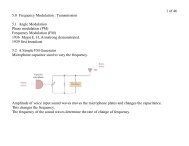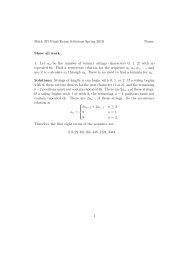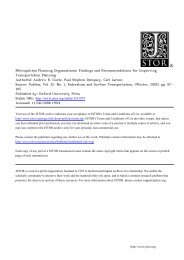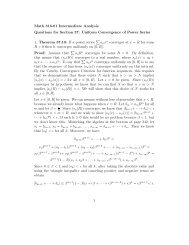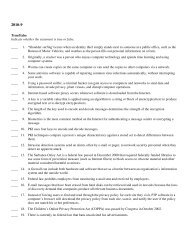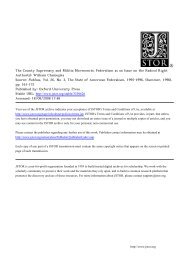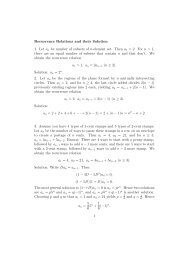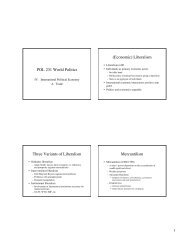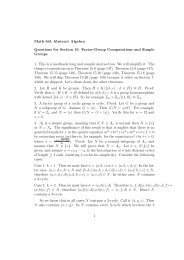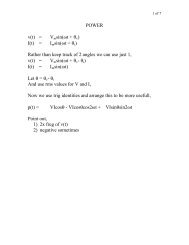Clemons and McBeth - MavDISK
Clemons and McBeth - MavDISK
Clemons and McBeth - MavDISK
Create successful ePaper yourself
Turn your PDF publications into a flip-book with our unique Google optimized e-Paper software.
44<br />
FIGURE 2-1<br />
PARTI . THEORY AND PRACTICE<br />
THE DECISIONAL TEETER-ToTTER: A GRAPHIC PRESENTATION<br />
OF THE RATIONAL Moon<br />
I<br />
I<br />
t<br />
I<br />
CHAPTER2 . THE<br />
RATIONAL PUBUC POUCy METHOD 4S<br />
The risk of Chinese escalation <strong>and</strong> the possibility that air attacks would neither break the<br />
will nor decisively reduce the ability of the North to continue supporting the insurgency in the<br />
South were recognized. But, because no better alternative appeared to exist, the majority of<br />
the group meeting in Saigon favored such attacks! This was the sort of desperate energy that<br />
would drive much of our Vietnam policy in the years ahead. Data <strong>and</strong> analysis showed that air<br />
attacks would not work. . . . (p. 114)<br />
lhave reported the Honolulu discussion in some detail for tWo reasons: (1) we came close<br />
to the brink of a major escalation-without adequately examining its consequences or alternatives-but<br />
at the last moment drew back. . . . (p. 122)<br />
The Joint Chiefs agreed we should prepare plans for U.S. air strikes against North Vietnamese<br />
targets <strong>and</strong> the Ho Chi Minh Trail. . . . Neither then nor later did the chiefs fully assess<br />
the probability of achieving these objectives, how long it might take, or what it would cost<br />
in lives lost, resour.ces expended, <strong>and</strong> risks incurred. (p. 152)<br />
In retrospect, it is clear that our presentation to the President was full of holes. We failed<br />
to confront several basic questions. (p. 162)<br />
All of us should have anticipated the need for U.S. ground forces when the first combat<br />
aircraft went to South Vietnam-but we did not. (p. 175)<br />
'Senior army officers <strong>and</strong> field comm<strong>and</strong>ers proved far more realistic about the potential<br />
of airpower in Vietnam than did senior air comm<strong>and</strong>ers. For their part, senior air force generals<br />
<strong>and</strong> navy admirals were probably equally realistic about the limitations of ground operations.Each<br />
could see clearly the weaknesses of the other but was unable to realize their own<br />
limitations... but I did not sense-nor was I made aware of-the important <strong>and</strong> revealing divisions<br />
among them. These divisions were therefore never fully debated at the highest level.<br />
They should have been. (p. 176)<br />
Meanwhile, the Joint Chiefs, CINCPAC, Westy. <strong>and</strong> I all continued to react on a day-today<br />
basis to the gathering force of events when we-<strong>and</strong> especially I, as secretary-should<br />
bavebeen far more forceful in developing a military strategy <strong>and</strong> a long-term plan for the force<br />
structure to carry it out. (p. 182)<br />
Decisions were deferred as we groped for the least bad road to follow. (p. 191)<br />
Looking back, I clearly erred by not forcing-then or later, in Saigon or Washington-a<br />
knock-down, drag-out debate over the loose assumptions, unasked questions, <strong>and</strong> thin analyses<br />
underlying our military strategy in Vietnam. I had spent twenty years as a manager identifying<br />
problems <strong>and</strong> forcing organizations-






